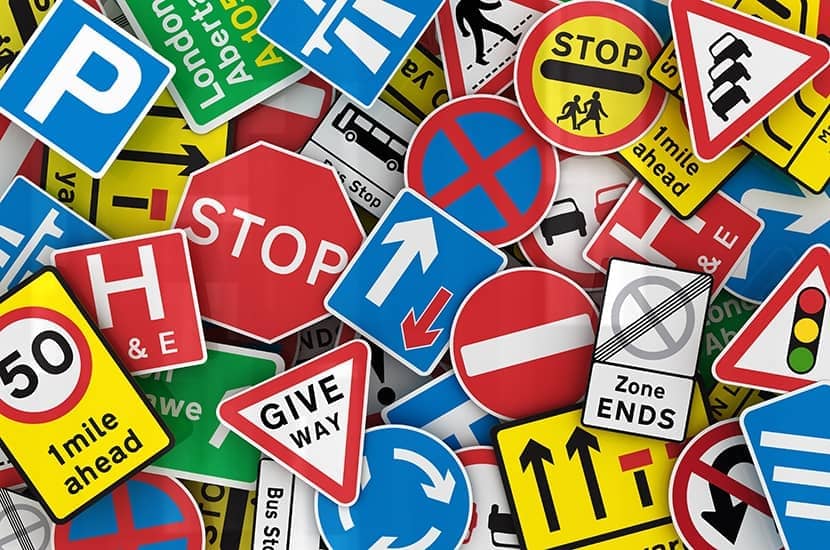I did a speed awareness course on Monday. For the uninitiated, you have the option of doing one of these if you’re caught speeding and want to avoid getting three points on your licence. It only lasts two and a half hours and there’s no test at the end, so it’s a no-brainer, although you have to do it again if you’re spotted playing on your phone at the back. I’ve never heard of anyone choosing the three points instead.
Like most people forced to undergo this humiliation, I was convinced I had nothing to learn. We all know about the laws of motion: the faster you’re going, the longer it takes to stop. And, inevitably, I found myself silently correcting the poor English of the two trainers. It’s either ‘more safe’ or ‘safer’, not ‘more safer’, and what are ‘road signages’, for Pete’s sake? But they won me over — and, I suspect, the other 12 arrogant ne’er-do-wells in the basement of Ealing’s Crowne Plaza hotel — by quizzing us about the meaning of different road signs in the Highway Code. I suspect they deliberately include this at the beginning to persuade their reluctant students that there’s actually a good deal about speed restrictions they aren’t aware of.
For instance, did you know that the meaning of the ‘national speed limit applies’ sign varies according to which part of the United Kingdom you’re in? The maximum speed for HGV drivers on single carriageways is 10mph lower in Scotland and Northern Ireland than in England and Wales.
The new Highway Code is designed to make life even more miserable for motorists
Maximum speeds also vary according to what sort of vehicle you’re driving, as the owner of a Transit van discovered to his astonishment. No sooner had we finished laughing at him — ‘No wonder you’re here, mate’ — than we were introduced to the ‘street light rule’, whereby a national speed limit of 30mph applies to all roads with street lights, including dual carriageways. Who knew? And when the trainers asked us how fast you’re allowed to go if an electronic sign outside a school says ‘Max speed 20 when lights flashing’ — and the lights are flashing — every single one of us got it wrong. The correct answer, astonishingly, is 30mph.
The Highway Code, it turns out, is like the tax code: incomprehensible to everyone except paid experts. Einstein said the hardest thing in the world to understand is income tax, but I’m guessing he wasn’t a British road-user. Which brings me, finally, to the point of this column: the Highway Code is about to get even more mind-bogglingly complex.
As it stands, it includes 307 rules, and eight annexes, but from 29 January it will be longer still. The new Code is the result of a consultation process that began in October 2018 and didn’t conclude until last month, and it reads as if it’s been written by the same crack team that covered Britain in cycle lanes, Low Traffic Neighbourhoods and pop-up one-way systems during the lockdowns.
Its great innovation is to create a hierarchy of road users, with pedestrians at the top, cyclists below them, and drivers at the bottom. So if a pedestrian is waiting to cross at a junction, drivers must give way, even if it causes a ten-car pile-up. Worse, on quieter roads cyclists are advised to ride in the centre of their lane to make themselves more visible and, if it’s a narrow country road, they should ride two abreast. Talk about incitement to road rage! And here’s the kicker: that guidance applies even if there’s a cycle lane running alongside the road. They are entirely optional, apparently. The town-hall Sir Humphreys who’ve spent tens of millions of ratepayers’ money disfiguring Britain’s roads must have had a good laugh at that.
It’s hard to dismiss the suspicion that the new Highway Code is designed to make life even more miserable for motorists. It’s not enough to force us all to switch to Priuses from 2030; for the net-zero zealots, all drivers will have to be constantly humiliated. And if that doesn’t ‘nudge’ us into abandoning our vehicles, other measures will be called for.
It won’t be long before you’re given an instant lifetime ban if you’re done for speeding — and more and more of us will be, as our society approaches Chinese levels of surveillance. Indeed, it’s already beginning: since 2019, any driver who’s had a licence for less than two years has been required to take the test again if they rack up six points.
I felt a bit miffed about having to do a speed awareness course, but soon we’ll look back on them as belonging to a golden age.







Comments